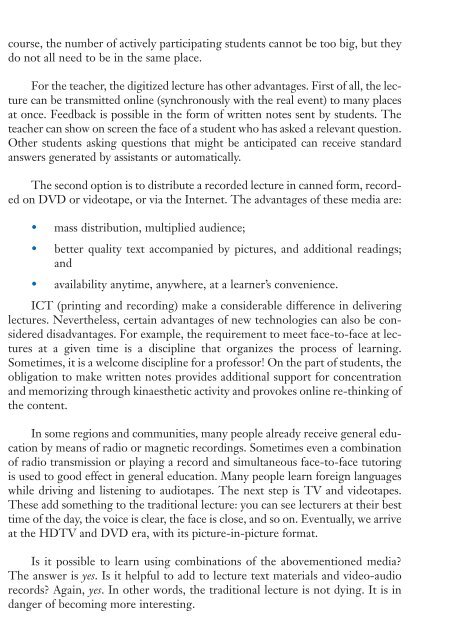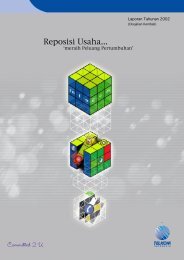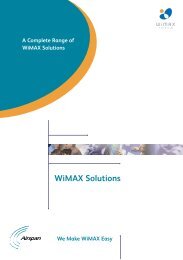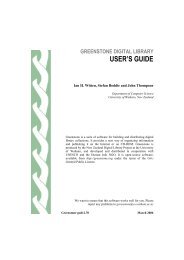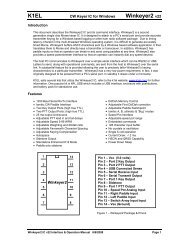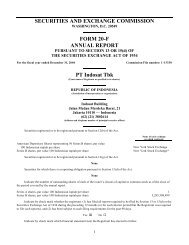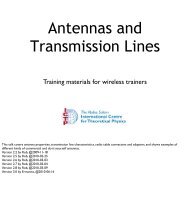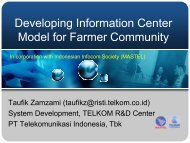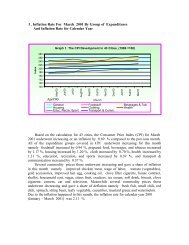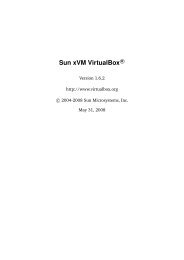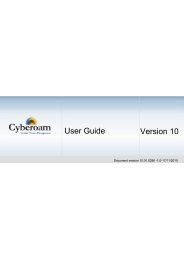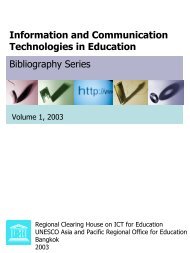Information and communication technologies in schools: a ...
Information and communication technologies in schools: a ...
Information and communication technologies in schools: a ...
You also want an ePaper? Increase the reach of your titles
YUMPU automatically turns print PDFs into web optimized ePapers that Google loves.
course, the number of actively participat<strong>in</strong>g students cannot be too big, but they<br />
do not all need to be <strong>in</strong> the same place.<br />
For the teacher, the digitized lecture has other advantages. First of all, the lecture<br />
can be transmitted onl<strong>in</strong>e (synchronously with the real event) to many places<br />
at once. Feedback is possible <strong>in</strong> the form of written notes sent by students. The<br />
teacher can show on screen the face of a student who has asked a relevant question.<br />
Other students ask<strong>in</strong>g questions that might be anticipated can receive st<strong>and</strong>ard<br />
answers generated by assistants or automatically.<br />
The second option is to distribute a recorded lecture <strong>in</strong> canned form, recorded<br />
on DVD or videotape, or via the Internet. The advantages of these media are:<br />
• mass distribution, multiplied audience;<br />
• better quality text accompanied by pictures, <strong>and</strong> additional read<strong>in</strong>gs;<br />
<strong>and</strong><br />
• availability anytime, anywhere, at a learner’s convenience.<br />
ICT (pr<strong>in</strong>t<strong>in</strong>g <strong>and</strong> record<strong>in</strong>g) make a considerable difference <strong>in</strong> deliver<strong>in</strong>g<br />
lectures. Nevertheless, certa<strong>in</strong> advantages of new <strong>technologies</strong> can also be considered<br />
disadvantages. For example, the requirement to meet face-to-face at lectures<br />
at a given time is a discipl<strong>in</strong>e that organizes the process of learn<strong>in</strong>g.<br />
Sometimes, it is a welcome discipl<strong>in</strong>e for a professor! On the part of students, the<br />
obligation to make written notes provides additional support for concentration<br />
<strong>and</strong> memoriz<strong>in</strong>g through k<strong>in</strong>aesthetic activity <strong>and</strong> provokes onl<strong>in</strong>e re-th<strong>in</strong>k<strong>in</strong>g of<br />
the content.<br />
In some regions <strong>and</strong> communities, many people already receive general education<br />
by means of radio or magnetic record<strong>in</strong>gs. Sometimes even a comb<strong>in</strong>ation<br />
of radio transmission or play<strong>in</strong>g a record <strong>and</strong> simultaneous face-to-face tutor<strong>in</strong>g<br />
is used to good effect <strong>in</strong> general education. Many people learn foreign languages<br />
while driv<strong>in</strong>g <strong>and</strong> listen<strong>in</strong>g to audiotapes. The next step is TV <strong>and</strong> videotapes.<br />
These add someth<strong>in</strong>g to the traditional lecture: you can see lecturers at their best<br />
time of the day, the voice is clear, the face is close, <strong>and</strong> so on. Eventually, we arrive<br />
at the HDTV <strong>and</strong> DVD era, with its picture-<strong>in</strong>-picture format.<br />
Is it possible to learn us<strong>in</strong>g comb<strong>in</strong>ations of the abovementioned media?<br />
The answer is yes. Is it helpful to add to lecture text materials <strong>and</strong> video-audio<br />
records? Aga<strong>in</strong>, yes. In other words, the traditional lecture is not dy<strong>in</strong>g. It is <strong>in</strong><br />
danger of becom<strong>in</strong>g more <strong>in</strong>terest<strong>in</strong>g.<br />
ICT <strong>in</strong> Learn<strong>in</strong>g <strong>and</strong> Teach<strong>in</strong>g<br />
129


